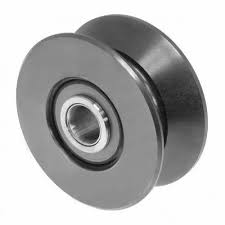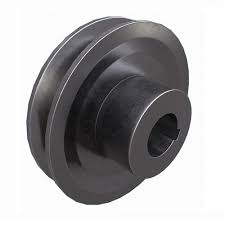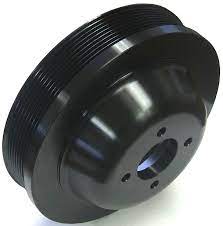Product Description
Company profile
HangZhou CHINAMFG Technology Co., Ltd. founded on April 26, 2017,is a high-tech private enterprise which engaged in the research & development, production and sales of diesel engines, engine spare parts, stationary power and automatic control products.In addition, we are also committed to developing new products to meet the different requirements of different customers.
We have a complete quality control system, strong technical research & development capability and advanced production level. At present, it has developed into a professional team with R&D, sales and after-sales service.Our company is located in HangZhou city, ZheJiang Province, convenient transportation.
With good credit and excellent service, the company has established long-term relationships with many enterprises. our business philosophy is “customer first, integrity first” and the service concept is “treating friends sincerely and benefiting customers”, we will try our best to provide the best quality products and services to all of our customers . In today’s fiercely competitive environment, in order to win common development, we must need to improve product quality and after-sales service continuously .Our company holds export license, the products are exported to Europe, South Africa, India, Chile, Mexico, Peru, Malaysia, Southeast Asia and other countries, and has been widely praised at home and abroad.
As the main and big supplier & manufacturer of CHINAMFG engine parts in China . we can provide parts for CHINAMFG 912/913/914/1013/2012/2013/1011/2011/413/513/1015/226B series engines .
we have our own technology to develop and produce the CHINAMFG fuel pump , coolant pump , shutdown device , 1011/2011 timing belt kit & oil pump .
High quality & larger inventory & competitive price are our advantages .
Parts List
Photos of our others parts
FAQ
Transport
Packages for shipping
|
Shipping Cost:
Estimated freight per unit. |
To be negotiated |
|---|
| Certification: | ISO9001 |
|---|---|
| Standard Component: | Standard Component |
| Technics: | Casting |

Can grooved pulleys be used in DIY projects and home improvement tasks?
Yes, grooved pulleys can be used in DIY (do-it-yourself) projects and home improvement tasks to enhance functionality, create mechanical systems, or improve efficiency. Here are some examples of how grooved pulleys can be utilized in DIY and home improvement applications:
1. Mechanical Systems:
– DIY Conveyor Belt: Grooved pulleys can be used to create a small-scale conveyor belt system for moving objects or materials within a DIY workshop or project. By attaching grooved pulleys to a frame and threading a compatible belt, you can easily transport items from one location to another.
– Garage Door Opener: Grooved pulleys can be employed in DIY garage door opener systems. By integrating grooved pulleys with a motorized mechanism and a timing belt, you can create a simple and efficient way to open and close your garage door.
2. Mechanical Advantage:
– DIY Block and Tackle System: Grooved pulleys can be utilized in a block and tackle system to create a mechanical advantage for lifting heavy objects. By arranging multiple grooved pulleys and a rope or cable, you can reduce the amount of force required to lift or lower objects, making it easier to handle loads in DIY projects or home renovations.
3. Home Appliances:
– DIY Clothesline: Grooved pulleys can be incorporated into a DIY clothesline system. By installing grooved pulleys at appropriate locations and using a durable rope or line, you can create a convenient method for hanging and drying clothes outdoors.
– Window Blinds or Curtains: Grooved pulleys can be employed in DIY window blinds or curtain systems. By attaching grooved pulleys to the window frame and threading a cord or chain, you can create a mechanism to easily raise or lower blinds or curtains, providing privacy and light control.
4. Exercise Equipment:
– DIY Pulley System for Strength Training: Grooved pulleys can be used in DIY pulley systems for strength training or rehabilitation exercises. By mounting grooved pulleys to a sturdy frame and using cables or ropes with handles, you can create a versatile and adjustable resistance training system at home.
5. Art Installations:
– Kinetic Sculptures: Grooved pulleys can be incorporated into DIY kinetic sculptures or interactive installations. By utilizing grooved pulleys with various diameters and attaching them to movable components, you can create visually appealing and dynamic artworks that respond to external forces or user interaction.
When using grooved pulleys in DIY projects and home improvement tasks, it is essential to ensure proper installation, alignment, and tension of the belts or ropes. Additionally, always prioritize safety by following best practices, using appropriate materials, and considering weight limits and load-bearing capacities.
By leveraging grooved pulleys in DIY projects and home improvement tasks, you can add functionality, mechanical advantage, and efficiency to your creations and make your home projects more enjoyable and rewarding.

What maintenance procedures are necessary to ensure the reliability of grooved pulleys?
Maintaining grooved pulleys is essential to ensure their long-term reliability and optimal performance. Proper maintenance procedures help prevent premature wear, minimize downtime, and extend the lifespan of the pulleys. Here’s a detailed explanation of the maintenance procedures necessary to ensure the reliability of grooved pulleys:
1. Regular Inspection:
Perform regular visual inspections of grooved pulleys to identify any signs of wear, damage, or misalignment. Check for cracks, corrosion, excessive wear on the grooves or belt contact surfaces, and any abnormalities in the pulley structure. Inspect the pulleys for proper alignment and ensure that they are securely mounted. Early detection of any issues allows for timely corrective actions, reducing the risk of failures or system downtime.
2. Belt Tension Checks:
Monitor the tension of the belts connected to the grooved pulleys regularly. Proper belt tension is crucial for efficient power transmission and to prevent slippage. Use appropriate tension measuring tools or follow manufacturer’s recommendations to ensure the belts are within the specified tension range. Loose or excessively tight belts can lead to reduced performance, increased wear on pulleys and belts, and potential belt failure.
3. Belt Cleaning and Lubrication:
Clean the belts and grooved pulleys periodically to remove dirt, debris, and built-up residues. Use a suitable belt cleaning solution and follow manufacturer’s guidelines for belt cleaning procedures. Lubricate the grooved pulleys, if necessary, with a compatible lubricant to reduce friction and wear. Avoid over-lubrication, as excessive lubricant can attract more dirt and debris, leading to accelerated wear.
4. Belt Replacement:
Monitor the condition of the belts connected to grooved pulleys and replace them when signs of wear, cracking, fraying, or other damage are observed. Over time, belts can stretch, lose their tension, or deteriorate due to environmental factors or operational stresses. Replace the belts with compatible ones of the correct size, type, and specifications as recommended by the manufacturer.
5. Pulley Alignment:
Ensure proper alignment of grooved pulleys to prevent belt misalignment, excessive wear, and premature failure. Misaligned pulleys can cause the belts to run off-track and lead to reduced power transmission efficiency and increased stress on the pulleys and belts. Use alignment tools or techniques such as laser alignment to align the pulleys accurately, following manufacturer’s guidelines.
6. Pulley Cleaning and Inspection:
Clean the grooved pulleys regularly to remove any accumulated dirt, dust, or debris. Use a brush or compressed air to clean the grooves, ensuring that they are free from obstructions that can affect belt traction. Inspect the grooves for signs of wear, damage, or material buildup. Remove any foreign objects or buildup that may hinder the proper functioning of the pulleys.
7. Check for Pulley Runout:
Inspect the grooved pulleys for runout, which refers to any wobbling or eccentric movement of the pulley during rotation. Excessive runout can cause belt tracking issues, uneven wear, and increased stress on the pulleys and belts. Use dial indicators or other measurement tools to check for runout and take corrective measures if necessary, such as pulley replacement or adjustment.
8. Environmental Considerations:
Consider the environmental conditions in which the grooved pulleys operate and take appropriate measures to protect them. For example, in dusty environments, install protective covers or enclosures to prevent the ingress of dust and debris. In corrosive environments, use pulleys made from corrosion-resistant materials or apply suitable coatings to enhance their resistance to corrosion.
9. Record Keeping:
Maintain records of maintenance activities, including inspection dates, belt replacements, alignment checks, and any repairs or adjustments made to the pulleys. This documentation helps establish a maintenance history and facilitates tracking the performance and condition of the grooved pulleys over time. It also serves as a reference for future maintenance and troubleshooting purposes.
10. Manufacturer’s Guidelines:
Follow the manufacturer’s guidelines, recommendations, and specifications for maintenance procedures specific to the grooved pulleys being used. Manufacturers often provide detailed instructions regarding maintenance intervals, lubrication requirements, cleaning methods, and other important considerations. Adhering to these guidelines ensures that the maintenance procedures are performed correctly and in line with the manufacturer’s recommendations.
In summary, maintaining the reliability of grooved pulleys requires regular inspection, proper belt tension checks, belt cleaning and lubrication, timely belt replacements, pulley alignment, pulley cleaning and inspection, checking for pulley runout, considering environmental conditions, maintaining maintenance records, andfollowing the manufacturer’s guidelines. By implementing these maintenance procedures, you can ensure that grooved pulleys operate reliably, minimize the risk of failures, and optimize their performance and lifespan.

What types of belts or cables are typically employed with grooved pulleys?
Grooved pulleys, also known as V-groove pulleys, are commonly used in conjunction with specific types of belts or cables. Here’s a detailed explanation of the typical belts or cables employed with grooved pulleys:
1. V-belts:
V-belts are one of the most commonly employed types of belts used with grooved pulleys. These belts have a trapezoidal cross-section that matches the V-shaped grooves in the pulleys. V-belts are made of rubber or synthetic materials and are flexible, allowing them to fit into the grooves of the pulleys. They provide reliable power transmission and are widely used in various applications, including automotive engines, industrial machinery, HVAC systems, and more.
2. V-Ribbed Belts:
V-ribbed belts, also known as serpentine belts or multi-rib belts, are another type of belt commonly used with grooved pulleys. These belts have a flat or slightly curved cross-section with ribs running along their length. The grooved pulleys for V-ribbed belts have multiple grooves, matching the ribs on the belt. V-ribbed belts are often used in applications where high power transmission is required, such as automotive engine systems, industrial machinery, and HVAC systems.
3. Timing Belts:
Timing belts, also called toothed belts or synchronous belts, are used in applications that require precise synchronization of the pulleys. These belts have teeth or notches on the inner surface that mesh with corresponding grooves on the pulleys. Timing belts are commonly employed in engines, camshaft drives, conveyor systems, and other applications where accurate timing and synchronization are crucial for proper operation.
4. Flat Belts:
While grooved pulleys are primarily designed for V-belts or V-ribbed belts, they can also be used with flat belts in certain applications. Flat belts have a rectangular cross-section and do not have grooves or teeth. However, grooved pulleys can still be used with flat belts by providing a flat contact surface. Flat belts are used in various applications, including power transmission, conveyor systems, and light-duty machinery.
5. Wire Rope or Cable:
In certain specialized applications, grooved pulleys can be employed with wire rope or cable. The grooves in these pulleys are designed to accommodate the specific diameter and shape of the wire rope or cable, providing a secure grip. This configuration is commonly used in lifting and hoisting systems, cranes, winches, and other applications where wire rope or cable is used to transmit force or lift heavy loads.
It is important to note that the selection of the appropriate belt or cable for use with grooved pulleys depends on the specific requirements of the application, including power transmission capacity, load, speed, and environmental conditions. Manufacturers and suppliers of grooved pulleys typically provide compatibility information and guidelines regarding the suitable types and sizes of belts or cables to be used with their pulleys.
In summary, the typical belts or cables employed with grooved pulleys include V-belts, V-ribbed belts, timing belts, flat belts, and wire rope or cable. The choice of the belt or cable depends on the specific application and the requirements of the power transmission system.


editor by CX
2023-10-07